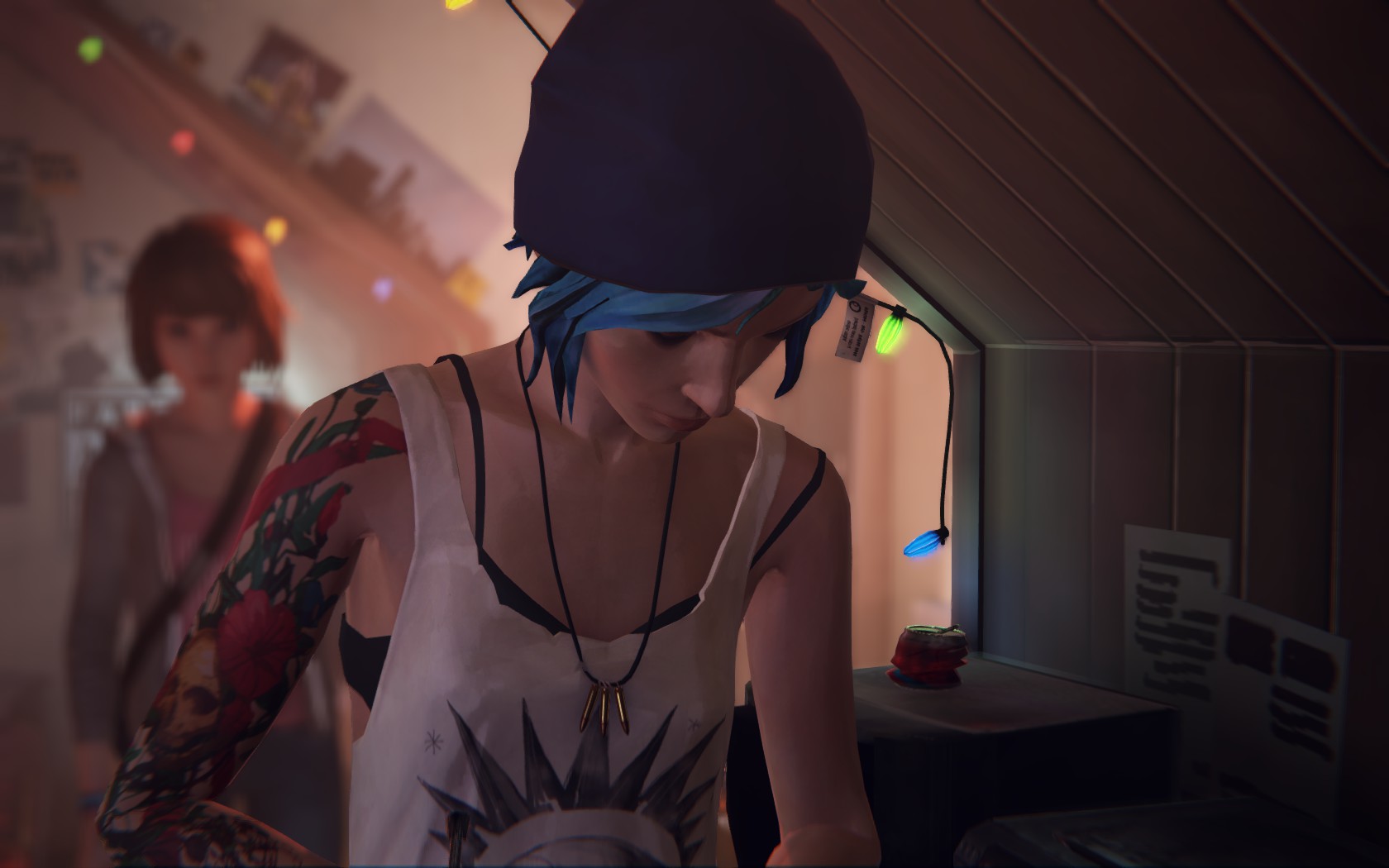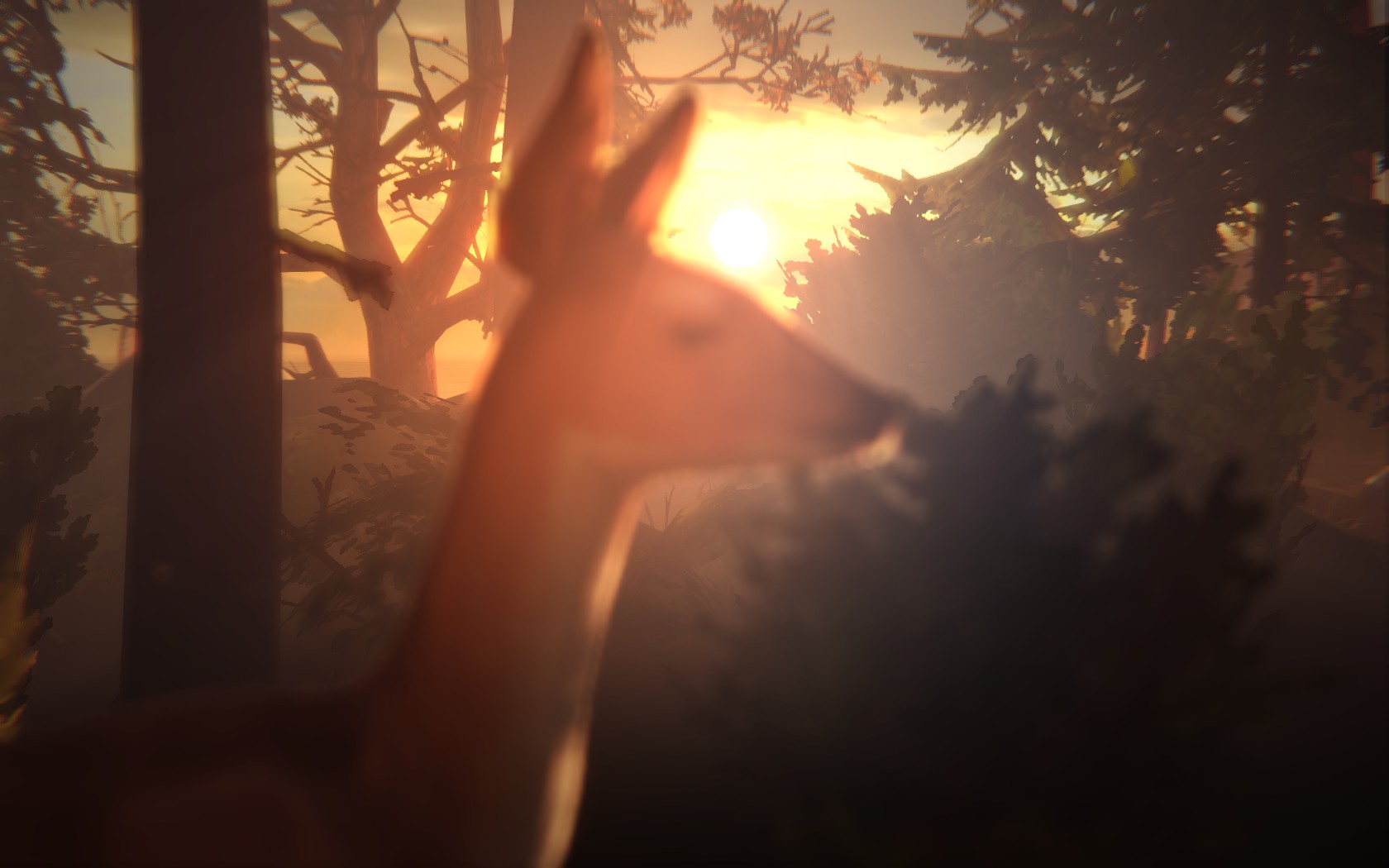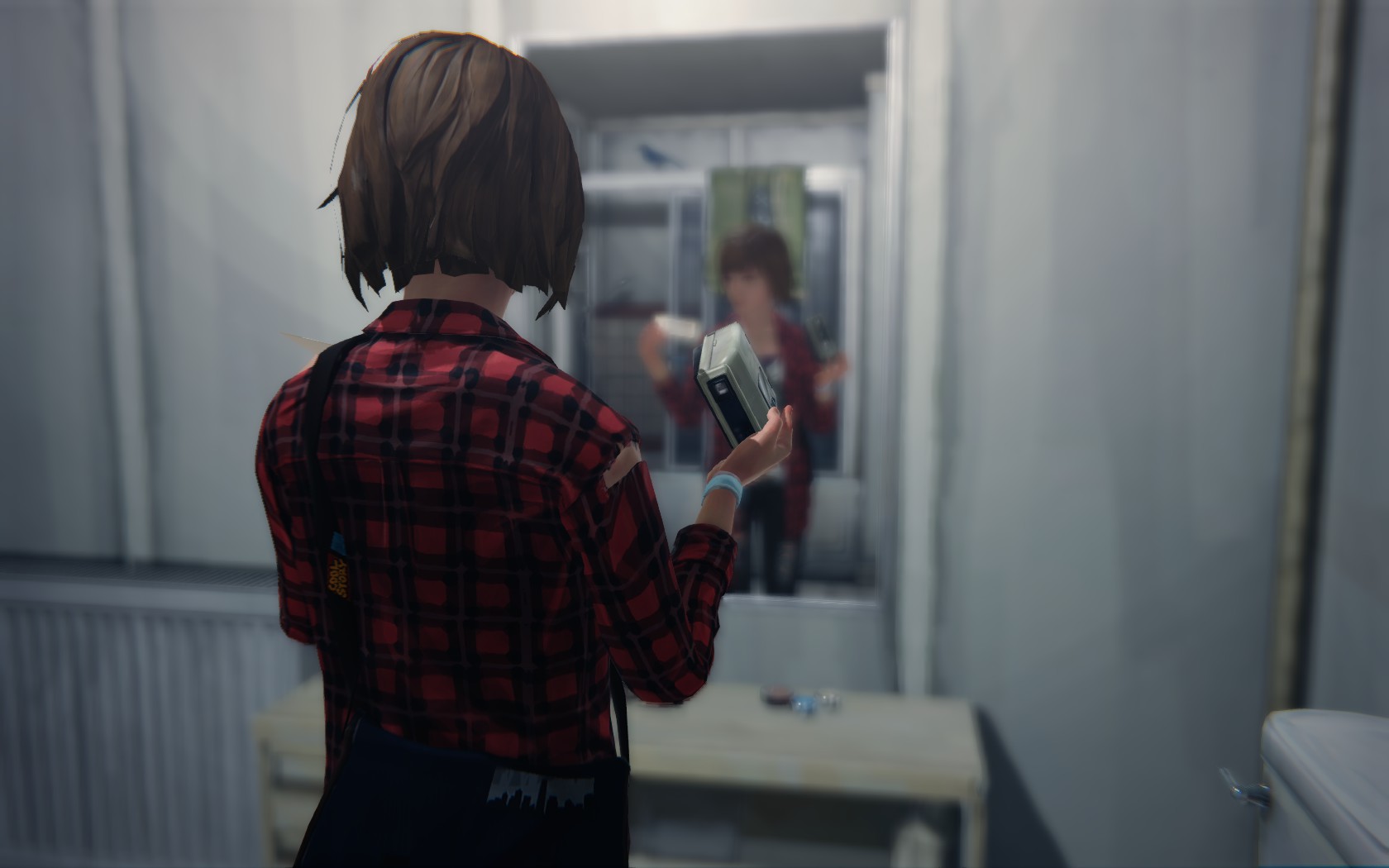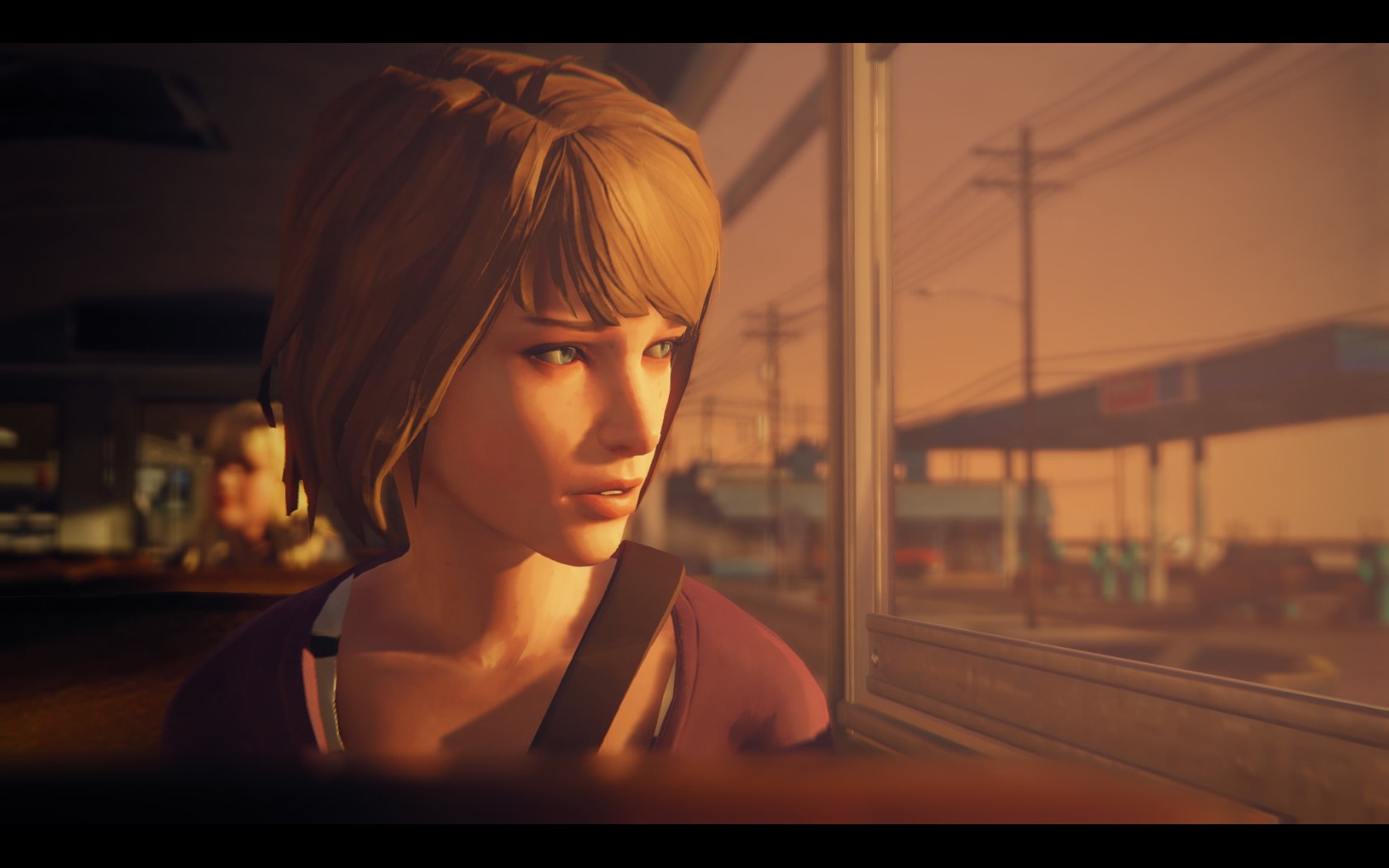This is my review for Life is Strange which was played on PC. This is a spoiler-free review, however I will be giving my opinion on game mechanics and game content in a very general way.
It was a life-long dream of mine to visit the USA and more specifically the Pacific North West. This corner of the States has some truly spectacular terrain and geographical features. The forest that covers the Olympic Nation Park for example is actually a deep rain forest covered in moss and mystery in equal parts. In the middle is one of the most spectacular mountain ranges in America which, as I was approaching it in my hire car, just blew me away, as did the fact I'd managed to pick a day with no rainfall: a rare thing in this part of the world. So why am I giving you a geography lesson? - because this part of the world (the Oregon coastline specifically) is where my latest game review is based and the setting is one personal reason why I was so drawn to play this game.
This is a narrative-driven adventure game played through the eyes of an eighteen year old photography student Max Caulfield. In many ways Max is your typical young woman who is just trying to find out what kind of person she wants to be and making plenty of mistakes on the way. The big difference is that Max discovers she has the power to reverse time at will but also remember the future she just left, therefore giving her the ability to make conscious changes and then watch the new time line unfold.
Painting with light.
Overall I like the look of Life is Strange and think the choices the developers have made really work well for the type of game we have here. Yes, on an individual basis, some objects look awful - tree foliage looks like it was cut out of a children's sticker book - but the scenes have been crafted with care and thought. The art team have used camera angles to wonderful effect making scenes that would otherwise have looked drab instead create elevated tension and a sense of place. After all, we are not playing your own character here; this is you looking into the world of Max and the game makes you remember that in lots of subtle ways.
This game is not about pushing back the graphical envelope though and in actual fact I really like the game's visual style: it feels organic and hand-drawn. This feeling is reinforced by everything from the font on the menu screen to the artistic way Max fills out her personal diary. The screen shots you see throughout this review are all from my game and all using the in-game engine so whilst some of the texture work and character models are just average the overall look of the game is great.
Subtle intimacy.
If we are honest, most of us can be nosy and I think what makes a good story is the feeling you are being allowed to see something of the character that others would never be aware of. I'm not talking about watching them in the shower or having sex but more that you see the real person under the many social layers of camouflage we put up every day. This level of honesty from the game is a very special part of what makes the magic work. For example, as you progress through the story you can view Max's personal diary and see how she records events. This written journal supplements Max's internal dialogue which you hear throughout the game. You can even see the text conversations between her and various key NPCs. Again there isn't anything really salacious going on but just the ability to see this far into someone's private world is a key way that the game engages you with Max.
I also like how the game doesn't ram concepts and situations down your throat. I admire Bioware games but most of the relationship dialogue feels forced and contrived: I don't want to pick (A) to be gay or straight. In the same way I don't need or want a signpost above each possible sexual encounter. Thus far, the games industry has a lot to learn about implementing sex into games and games like Life is Strange are heading in the right direction. The reason I say this is the delicate and natural way relationships exist within the dialogue: Max's relationship with Chloe for example is not wrapped up in a 'this is your gay love interest' package; she is simply your best friend who you have deep feelings for. Yes, it's hinted at that Max does have sexual feelings for Chloe, but it's never fired at you in neon lights.
The problem with time.
So there are plenty of people I know who are playing this game, most of them had made it to the end of episode four before I did and so many warnings about spoilers had to be issued! It is clear that most people who have played this game rate it from good to one of the best adventure games they have played in recent times - you just need to look at the Steam community page to see how much enthusiasm there is for the characters that inhabit it. If I take the story and emotional beats away and look at it mechanically there are plenty of chinks in the armour. The way you have to almost walk into everything to get an interaction bubble is very off-putting; for a game that does such a wonderful job of building atmosphere and a sense of place a clumsy interaction mechanic like this seems like a bad choice. For me personally I would like to have had a button that reveals possible interactions to me within a set range, this way I could make a decision to walk over and see it without having to virtually rub myself all over people and things to interact. The odd time Max needs to look at objects out of her play area, a distant mountain perhaps, this could have been manually added.
In terms of gameplay I found Life is Strange to use a fairly basic recipe: enter an area and look at most things to get Max's opinion or feelings towards them. Some items can be interacted with such as message boards, computers, people and a whole raft of things. As Max is a photographer she can also take pictures of certain scenes and even help set them up: this is a nice touch. However this idea kind of underpins one of my own misgivings about this game in that a system where I decide what looks interesting would have been great and I think would have added a lot more to this idea. I know that this is Max's story and not mine and so for that reason I don't think it takes anything away from the game, this is just the way I would have approached it.
As I have covered in the previous section, I like the graphical style the developers have used. There have been times I've looked at a few in-game assets and thought they were poorly drawn. The grass outside Max's dorm for example is almost a monotone green and it just looks off but for some reason the environments as a whole work really well. I guess in some ways the graphics are almost abstract and this therefore adds to the wonderful atmosphere that each scene paints with good lighting, competent animation and excellent camera angles. The one area of the graphics I didn't like at all were the character models themselves. Many times I thought Max looked like her hair was made out of play dough and I really think the developers could have made more effort in this area, particularly as she is the central character. In addition to this the characters' eyes look dull and lifeless but one of the biggest killers for me is the lip syncing or lack thereof: it's consistently poor throughout the entire game and if I had to magically improve one aspect this would be it. As I've already talked about, the actual mechanics of the game are not its strong point so when the game is being held up by a good story a character's poor lip syncing is something I think should have been worked on to help deliver one of the game's strengths.
Arc of light.
The game is split into five episodes and each one has its own distinct feel. Many of the game's locations are reused in later chapter. I don't mind this so much - the only real problem I had is that you're never sure what has been changed and what is in the same 'state' as the previous chapter so, as a completionist, I had to go around clicking every damn scrap of paper again. I would have preferred a way of seeing if an object had gained new dialogue or options since my last visit.
Life is Strange is a story and a good one at that. I made the mistake of assuming each chapter would keep to the same beats while increasing the tempo in each chapter until the climax in chapter five but a few times the story threw me a curve ball and one story event in particular had me sat back in my chair, utterly blown away. As I've mentioned, the big stick in this game is the time manipulation powers Max acquires at the start of the game. This game mechanic is used throughout each scene in various ways and overall I have to say they played it a little safe for my taste. In most cases it's just a matter of trial and error until you either find all the objects Max needs or choose the sequence of answers the NPC needs to hear to give you want you want. This isn't always the case though, sometimes the game does allow you to really mess with people and choices you make have permanent ramifications. Aside from the obvious time twirling Max can do, choice is the most interesting aspect of this game: the choices you make and how they affect how events unfold. Sometimes you can see these consequences coming and sometimes not, in fact I sometimes did put Max in peril (or social peril) in order to do the right thing (based on my personality of course) and so in this way you do put your own stamp on the game. I like the summary at the end of each chapter, it shows a percentage of how many other players made the same choice as you and what other outcomes were available.
Summary
I just watched the credits roll on the final episode of Life is Strange which released last night on Steam and which I have spent the last few hours playing through: I can now finish my review and give my final thoughts on its concluding chapter. As I look back over the journey the game took me on, the inspirational cues are plain to see: Donnie Darko for sure with its alternate reality and time travel theology and I also found some of the music when Chloe and Max were sneaking into school to be very similar, and The Butterfly Effect of course was also based around cause and effect. This is one of the most brutal and enjoyable aspects of Life is Strange: I like how the changes are not too far-fetched or unfair in how you change the future. There are other films but now that I think about it there are not that many games that put time travel (or time manipulation) at the helm of the game. In fact the games that do spring to mind use time reversal as a pure mechanic rather than part of a changing narrative.
This is a spoiler free review and so I will be careful what I convey about my feelings about the end of Life is Strange. I will say that overall I think it's a great game that whilst certainly lacking in some key areas as I've outlined above, the final experience comes home with a meaningful and satisfying end. There is one sequence near to the end of the game that I thought was unnecessary and, while visually striking in terms of choice recognition and progression, only acted as padding. Like any game players will have their own expectations and will react to the final chapter with their own set of wants and needs. Like all good stories this one has to end somewhere but the beauty of games is we get to say how. I'm looking forward to speaking to my friends as they cross the finish line and hearing how things ended up in their story and therein lies the magic of this game: that our own choices and personality are woven between the pages.
Thank you for reading my review of Life is Strange, I hope you enjoyed it. If you like what you see please share a link with friends or social media and tell them to come and check out my site. If you have any feedback or questions please do not hesitate to send me a email at riggedforepic@gmail.com or tweet me @riggedforepic.











